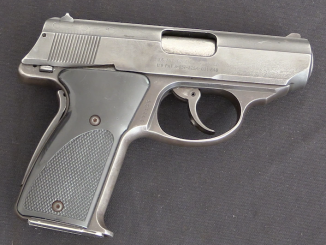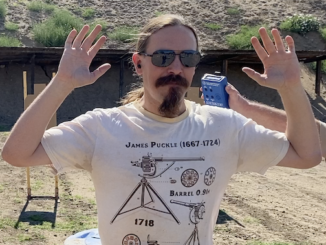Written in 1997, Timothy Mullin’s “Testing the War Weapons” sets out to provide a practical users guide to a wide variety of military rifles and light machine guns from the late 1800s to the present day. Unfortunately, the book suffers for lack of good editing, and comes out rather dry and repetitive.
Probably half the volume of the text could have been removed without adversely impacting the author’s ability to communicate his insights on the guns being tested. While the guns cover a wide range or history and geography, there is significant repetition – in the most serious case, fully 24 of the 148 guns covered are Mauser bolt action variants, and thus very similar to each other. Had these been consolidated down to just two or three combined entries, it would have left room for more in depth analysis. For example, more information on the historical uses of the guns and how those would or would not apply today would have been interesting.
I think the core of a good and interesting book is present, but hampered by poor editing, poor technical elements (photos), and pre-Internet publication leading to a somewhat narrow understanding of many of the guns.
Mr. Mullin’s three books of this type are available on Amazon:
Testing the War Weapons
The Fighting Submachine Gun, Machine Pistol, and Shotgun
The 100 Greatest Combat Pistols




When I first saw the title I thought, “Oh cool, a book about the history of military trials! Now that’s something I’d like to read.” Then I found out it was just another book of compiled gun tests. Ho hum, no thanks. ^__^
Thanks a lot for the review.
Dear Ian,
Thanks for the review of the book.
I do think you missed the main point of the book which was to explain how the weapons are used as weapons not collector items.This is why I tested so many Mausers, M-N etc.Also the PE 57 and the AMT are really quite different.Try taking them on a patrol and you will see.My purpose in writing the series is to show how the weapons are used as weapons so if a person comes across one they can effectively use it as a weapon.This is what I did and I think quite honestly no one else has ever done such a thing.My book does something that you cannot find anywhere else and for that reason it is an important work.Even in the 30 years since it has been written many of the weapons I tested as weapons are becoming collector items and in the future people will not have an opportunity to try them as weapons so in my book they can see how they really work as weapons.
Be certain to review my comments on how to operate the Rolling Block and Trap Door rifles as weapons as no one else has ever written how they are to be practically operated as far as I can determine.Maybe after my book but not before.
Lastly while I was an infantry officer in the US Army and served in the Army for 7 years I did not say I served in Vietnam so I am uncertain why you think so.In one edition of one of the books Palidin made that error and they corrected it in the next edition as my request and demand so I do not want you to think otherwise.
Anyway thanks for the review and hopefully you will better understand the basis and need for the book when you consider my comments.
Have a good day.
Tim
Ian, an interesting book review as usual. I can’t speak to the issues you raise about this book as I have yet to read it. However I have read Mr Mullin’s book, ‘The Fighting Submachine Gun’, and cannot agree with your assessment of it. Over the years I have fired a number of the SMGs he reviews and find his assessments to be spot on.
Late to the conversation, but I read this book when it was newly published which was as Ian says, pre-Internet. I agree that the chapters read like a checklist of likes and don’t likes. Once the reader gets past that premise, there are explanations (maybe they’re opinions) which changed my understanding of some rifles. It reads like the author laid each rifle on the table and commented on each feature, and then for some guns had a more expressive checklist. Overall, I did like the conclusions that the P’14/M1917 bolt handle makes it better than its peers. I liked the discussion of the Rolling Block.